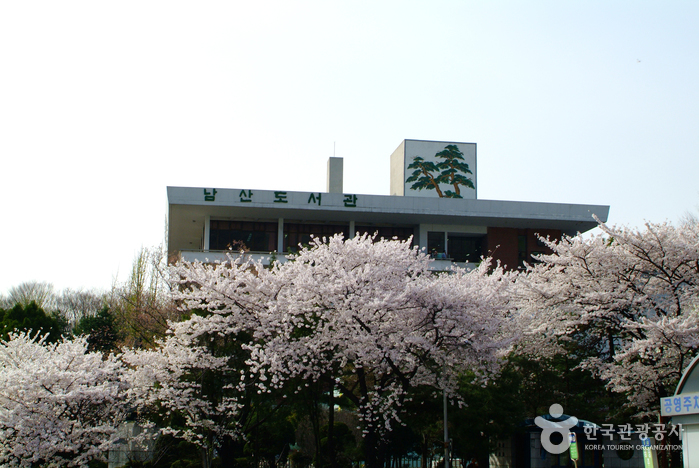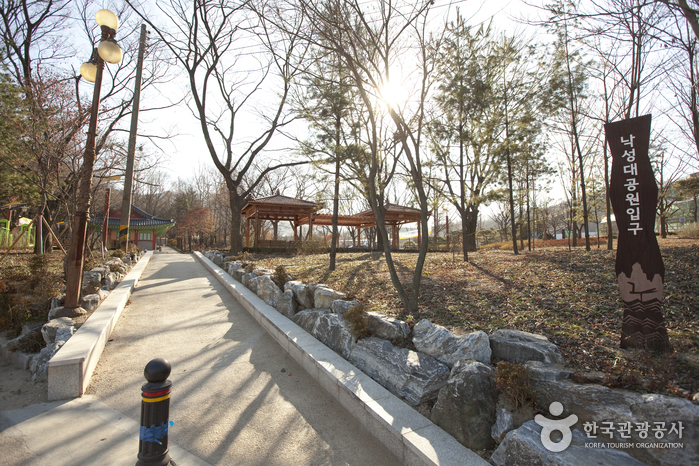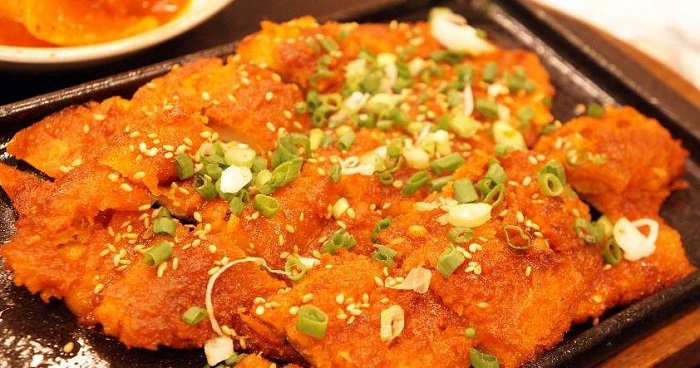Artbox - Daechi Branch [Tax Refund Shop] (아트박스 대치)
5.3Km 2024-04-18
454, Dogok-ro, Gangnam-gu, Seoul
-
CheongKwanJang - Seoul Nat’l Univ. Branch [Tax Refund Shop] (정관장 서울대)
5.3Km 2024-04-18
Store #102, Yeseong Officetel, 1798, Nambusunhwan-ro, Gwanak-gu, Seoul
-
Namsan Library (서울특별시교육청 남산도서관)
5.3Km 2021-07-07
109, Sowol-ro, Yongsan-gu, Seoul
+82-2-754-7338
Namsan Library opened as Kyeongseong Prefectural Library in 1922 as a public library in Myeong-dong, Jung-gu, Seoul. The library was moved to the current site in 1964 with a newly built building and its name changed to Namsan Library in 1965. This concrete building was built in 1964 and was designed by architect Lee Haeseong. It was designated as Seoul Future Heritage in 2013, credited for its preservation value.
It is comprised of 19 rooms and educational areas including the Humanity and Social Science Hall, Nature Science Hall, Language and Literature Hall, Electronic Information Room and more. Since opening, the library has collected nearly 500,000 books, 16,000 non-book materials, 700 continuing resources, and other special materials like old books, oriental books (including Japanese books), and more. Namsan Library also operates a reading treatment program unique to this library that began in 2005. The program includes remodeling of reading consultation room, training for people in charge of reading treatment, workshops, programs for individuals and groups. Also, various exhibitions, lectures, shows, cultural classes and other events are available all year long to enhance lifelong education.
BST Plastic Surgery [Tax Refund Shop] (비에스티성형외과 [사후면세점])
5.4Km 2024-04-16
6-7F Inam Bldg., 616, Yeongdong-daero, Gangnam-gu, Seoul
-
S.J. Cho Korean Paper Art Gallery (조수정 한지그림 갤러리)
5.4Km 2021-12-03
14, Teheran-ro 92-gil, Gangnam-gu, Seoul
+82-2-501-1505
The S.J. Cho Korean Paper Art Gallery is dedicated to hanji (traditional Korean paper) art and was the first of gallery in Korea to focus on this traditional medium. It is also the center of the Korean Hanji Art Organization, which has helped popularize hanji art over the past 30 years. Visitors can browse through hanji art in the gallery, enjoy traditional tea in the café, or look out at Bukhansan Mountain from the rooftop. The experience hall is located in the basement, where visitors can learn more about hanji art, or even try their hand at making their own.
Gwanaksan Mountain Nakseongdae Park (관악산 낙성대공원)
5.4Km 2021-07-16
77, Nakseongdae-ro, Gwanak-gu, Seoul
+82-2-879-6525
Nakseongdae Park was built as a tribute to General Kang Gam-chan (948-1031) of the Goryeo dynasty. In 1973, the city of Seoul reorganized the birthplace of General Kang, resulting in changes to the park. Located inside the park are Anguksa Shrine, the general’s birthplace, and a three-story stone pagoda, which was made during the Goryeo dynasty. The 4.48-meter-high pagoda is made of granite, and is called “Kang Gam-chan Tap (pagoda)” or “Kang Gam-chan Nakseongdae Tap”.
*Anguksa Shrine
Anguksa is a shrine built in 1974 emulating the wooden architecture style of the Goryeo era. The shrine has high ceilings and houses the portrait of General Kang Gam-chan. The shrine is located on the road leading to the back gate of Seoul National University and has become a popular place in the area.
*Nakseongdae Yuji
Nakseongdae Yuji is the birthplace of General Kang Gam-chan and the original location of the three-story pagoda. During the maintenance of Nakseongdae area in 1973, the pagoda was moved into the vicinity of Anguksa Shrine, and a two-meter tall monument was erected in its original location to mark the historical significance of the site.
Olive Young - Bongeunsa Station Branch [Tax Refund Shop] (올리브영 봉은사역)
5.4Km 2024-04-17
602, Yeongdong-daero, Gangnam-gu, Seoul
-
Hwangtae Myeongga (황태명가)
5.4Km 2021-03-30
602, Yeongdong-daero, Gangnam-gu, Seoul
+82-2-517-9262
You can enjoy various types of yellowtail dishes. This restaurant's signature menu is grilled dried pollack. This Korean dishes restaurant is located in Gangnam-gu, Seoul.
Olens - Yaksu Branch [Tax Refund Shop] (오렌즈 약수)
5.4Km 2024-04-23
#103, 117, Dasan-ro, Jung-gu, Seoul
-
Seoul Hyochang Park (서울 효창공원)
5.4Km 2024-07-09
177-18 Hyochangwon-ro, Yongsan-gu, Seoul
+82-2-2199-7608
Hyochang Park covers 122,245 square meters spanning across Hyochang-dong and Cheongpa 2-dong. It is a historic landmark that once contained several royal tombs, and was known at that time as Hyochangwon. The cemeteries that were originally located in Hyochangwon belonged to Crown Prince Munhyo, King Jeongjo’s first son who died at the age of five; Royal Noble Consort Uibin of the Seong Clan, King Jeongjo’s royal concubine and Crown Prince Munhyo’s mother; Royal Noble Consort Sugui of the Park Clan, King Sunjo’s royal concubine; and her daughter Princess Yeongon. The royal tombs were moved to Seooreung Tombs in the waning months of the Japanese colonial period. The Japanese empire began the development of Hyochangwon into a park in 1924, and the Japanese governor-general officially assigned the site as a park in 1940.
Presently, several of Korea’s greatest leaders are buried in Hyochang Park. The remains mostly belong to independence activists including Yoon Bong-gil, Lee Bong-chang, and Baek Jeong-gi, whose graves are collectively known as Samuisa Tomb. A statue of Lee Bong-chang has been built in the graveyard. Among the other patriotic martyrs who are interred in the park are Kim Gu and some of the key figures of the provisional government such as Lee Dong-nyeong, Cha I-seok, and Cho Seong-hwan. An ancestral shrine named Uiyeolsa has been built along the main gate and holds the portraits of the deceased independence activists.
![Artbox - Daechi Branch [Tax Refund Shop] (아트박스 대치)](http://tong.visitkorea.or.kr/cms/resource/99/2889399_image2_1.jpg)
![CheongKwanJang - Seoul Nat’l Univ. Branch [Tax Refund Shop] (정관장 서울대)](http://tong.visitkorea.or.kr/cms/resource/90/2880490_image2_1.jpg)



![Olive Young - Bongeunsa Station Branch [Tax Refund Shop] (올리브영 봉은사역)](http://tong.visitkorea.or.kr/cms/resource/68/2879768_image2_1.jpg)

![Olens - Yaksu Branch [Tax Refund Shop] (오렌즈 약수)](http://tong.visitkorea.or.kr/cms/resource/53/2889253_image2_1.jpg)
 English
English
 한국어
한국어 日本語
日本語 中文(简体)
中文(简体) Deutsch
Deutsch Français
Français Español
Español Русский
Русский